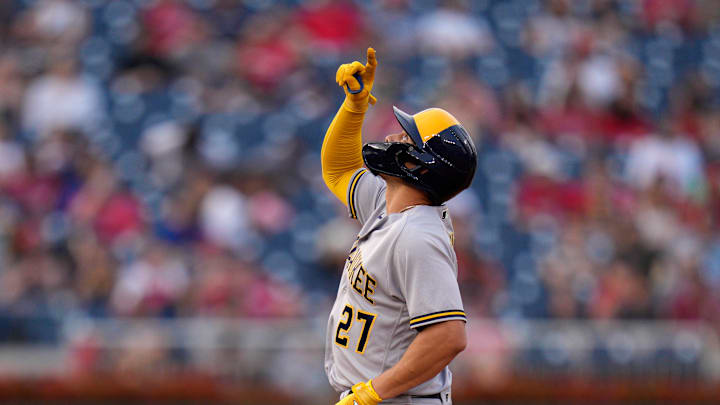As of April 23rd, Brewers shortstop Willy Adames has experienced a significant decline in performance, with a batting average of .183, an OPS of .620, and a 27.7% strikeout rate.
Throughout the entire season, Adames' struggles have persisted, maintaining a slash line of .203/.289/.382 with a .670 OPS and 17 home runs, compared to last season's much stronger numbers of .238/.298/.458 with a .756 OPS and 31 home runs.
The concern heightens as we are already past the halfway mark of the season, and his power numbers, though not completely vanished, have witnessed a substantial decline.
The question now is, is it time for the Brewers to press the panic button on Willy Adames?
Upon a closer examination of Willy Adames' advanced metrics, the data presents a mixed picture. One significant indicator is his BABIP (batting average on balls in play), which has seen a notable decline from .278 last season to .238 this year. This drop in BABIP can be interpreted in two ways: either Adames is experiencing some bad luck, or he has been making less solid contact with the ball.
However, further analysis suggests that the latter explanation is more likely, as Adames's hard-hit rate has decreased from the 70th percentile to the 21st percentile. Additionally, his average exit velocity has fallen from the 48th percentile to the 11th percentile, indicating that he is not making as much solid contact as in previous seasons.
An interesting observation is Adames' walk rate, which has seemingly improved from the 47th percentile to the 72nd percentile. Initially, one might speculate that this indicates a more selective approach at the plate. However, upon further investigation, it becomes evident that Adames' percentage of swings on pitches outside of the strike zone has increased each year since 2019, reaching a new career high this season. This raises concerns about the sustainability of his high walk rate and on-base percentage (OBP) if he continues to swing at so many pitches outside the zone.
Just by watching the games, it appears that Adames lacks a clear approach at the plate. He appears to be swinging unpredictably and often finds himself out in front of pitches, resulting in weak pulled contact. Another noticeable trend is the drop in the percentage of hits to the opposite field, declining from approximately 25% last year to just 15% this year.
Given the complexity of the various statistical trends and approaches observed, it is challenging to pinpoint a single issue responsible for Adames' struggles. One theory is that he might be pressing at the plate, perhaps trying too hard to hit home runs. While this hypothesis may sound far-fetched, it is the most reasonable explanation based on the available evidence. Ultimately, the root cause of his decline remains unclear, and it appears to be a multifaceted issue with potential mental factors playing a role.
Despite Willy Adames's struggles, there are some encouraging metrics indicating that he might be making adjustments at the plate. Notably, he has been more aggressive in attacking fastballs within the strike zone, with a significant increase from 58.5% in June to 80% in July. He has also shown an increased willingness to swing at in-zone breaking pitches (83% in July).
Adames has managed to lower his swing-and-miss rates on all pitch types, suggesting improved contact rates and fewer chased pitches. However, despite these adjustments, the improvements have not yet translated into tangible results, as his performance at the plate has not shown significant improvement. It remains to be seen if these changes will eventually lead to a more substantial impact on his overall offensive production.
The question of whether it's time to press the panic button on Willy Adames evokes a mixed response. Yes, some concern is warranted given his significant decline in performance. However, drastic measures like benching or DFA-ing him might not be the best solution.
Instead, a more measured approach is needed. Adames should be given a shorter leash, perhaps with a change of spot in the batting order because the cleanup spot is not where he should be right now, and he should get occasional days off to allow him to regroup mentally and make necessary adjustments. The Brewers' success down the stretch and in the playoffs could greatly benefit from Adames rediscovering his form at the plate. So, while some caution is necessary, it's also important to provide him with enough at-bats to figure it out.
